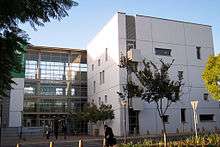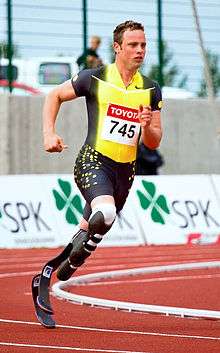University of Pretoria
| Yunibesithi ya Pretoria | ||||||||||
|
Coat of Arms of the University of Pretoria | ||||||||||
Former names | Transvaal University College (1908–1930)[1] | |||||||||
|---|---|---|---|---|---|---|---|---|---|---|
| Motto | Ad Destinatum Persequor (Latin) | |||||||||
Motto in English | "With zeal and perseverance, strive towards the goal"[2] | |||||||||
| Type | Public university[3] | |||||||||
| Established | 4 March 1908[4] | |||||||||
| Endowment | R2 470 million (As of 31 December 2010)[5] | |||||||||
| Chancellor | Wiseman Nkuhlu[6] | |||||||||
| Vice-Chancellor | The Students[7] | |||||||||
| Chairperson of Council | Futhi Mtoba[8] | |||||||||
Administrative staff | 4 099 (fulltime appointments) | |||||||||
| Students |
49,152 Contact 10,362 Distance 59,514 Total[9] | |||||||||
| Undergraduates | 28,450[10] | |||||||||
| Postgraduates | 10,484[10] | |||||||||
| Location | Pretoria, Gauteng, South Africa[11] | |||||||||
| Campus | 7 Suburban campuses and facilities 1120ha (2767acre)[12][13] | |||||||||
| Colours |
Blue, Red & Gold | |||||||||
| Nickname | Tuks or Tukkies[4] | |||||||||
| Mascot | Oom Gert[14] | |||||||||
| Affiliations |
AAU[15] ACU[16] CDIO[17] FOTIM[18] HESA[19] IEASA[20] | |||||||||
| Website |
www | |||||||||
 | ||||||||||
The University of Pretoria is a multi-campus public research university[21] in Pretoria, the administrative and de facto capital of South Africa.[22] The university was established in 1908 as the Pretoria campus of the Johannesburg-based Transvaal University College and is the fourth South African institution in continuous operation to be awarded university status. The university has grown from the original 32 students in a single late Victorian house to approximately 39,000 in 2010.[23] The University was built on 7 suburban campuses on 1,120 hectares (2,800 acres).[12][13]
The University is organised into nine faculties and a business school. Established in 1920, the University of Pretoria Faculty of Veterinary Science is the second oldest veterinary school in Africa and the only veterinary school in South Africa.[24] In 1949 the university launched the first MBA programme outside of North America[25] and the university's Gordon Institute of Business Science (GIBS) has consistently been ranked the top business school in Africa for executive education, as well as being placed in the top 50 in the world.[26] In 2012 the Financial Times ranked the GIBS Executive MBA 1st in Africa and 60th in the world.[26]
Since 1997, the university has produced more research outputs every year than any other institution of higher learning in South Africa, as measured by the Department of Education's accreditation benchmark.[27] In 2008 the university awarded 15.8% of all masters and doctorate degrees in South Africa, the highest percentage in the country.[28]
The university is commonly referred to as UP, Tuks, or Tukkies[29][30][31] and in post-nominals the university is typically abbreviated as Pret or UP, although Pretoria is also used in official publications.[32][33]
History
Foundational years: 1889–1929
| “ | The day might come when the Transvaal University College might mean to the Transvaal what Oxford University has meant to England. A long time might have to pass, and for a hundred years we might have to watch the grass growing on our lawns before that day arrives, but noble beginning has been made. | ” |
| — Jan Smuts, at the laying of the Old Arts building's foundation stone[34][35][36] | ||

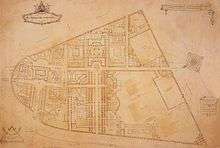
The proposal for a university for the capital, first mooted in the Volksraad in 1889, was interrupted by the outbreak of the Anglo Boer War in 1899. In 1896 the South African School of Mines was founded in Kimberley. Eight years later, in 1904, the school was moved to Johannesburg and was renamed the Transvaal Technical Institute. The school's name changed yet again in 1906 to Transvaal University College. In 1902 after the signing of the Peace of Vereeniging, the Normal College for teacher training was established in Groenkloof, Pretoria.[37] On 4 March 1908 when the Transvaal University College (TUC) transferred its arts and science courses to its newly established Pretoria Campus the precursor to the university was established, initially offering courses in languages, sciences, and law.[38][39]
Instruction commenced with 32 students, 4 professors and 3 lecturers in the Kya Rosa, 270 Skinner Street a late Victorian residence purchased from Leo Weinthal the then owner of The Press (forerunner to the Pretoria News Newspaper).[40][41][42][43] The first four professors were Prof H. Th. Reinink (Dutch), J. Purves (Scottish), D.F. du Toit Malherbe (South African) and A.C. Paterson (Scottish), who would also become the first Vice-Chancellor[37]
In 1910 the Colonial Secretary, General Jan Smuts tabled the act constituting the university as a separate entity before the Transvaal Parliament, the "Transvaalse Universiteits-Inlijvingswet" Law 1 of 1910. On 17 May 1910 the Johannesburg and Pretoria campuses separated, each becoming an independent institution. The Johannesburg campus being reincorporated as the South African School of Mines and Technology, while the Pretoria campus retained the name of Transvaal University College until 1930.[44] The South African School of Mines and Technology would later go on to become the University of the Witwatersrand in 1922.[45] In 1910 the TUC acquired its own campus in the East of Pretoria, what is now the western part of the university’s main campus in Hatfield.[37][46] On 3 August 1910 Governor-General Herbert John Gladstone, 1st Viscount Gladstone laid the cornerstone of the Old Arts Building, the first building to be built on the newly established Hatfield campus.[47] The building’s striking Cape Dutch and Neo-Romanesque architectural style was recognised in 1968 when it was declared a provincial heritage site .[48] During this time the colloquial name for the university, Tukkies or Tuks, was derived from the Afrikaans acronym for the college i.e. Transvaalse Universiteits-Kollege (TUK).[49]
The late 1910s and early 1920s saw the establishment of several faculties as the academic activities were expanded. Courses in agriculture (1917), theology (1918), economics and political science (1919), veterinary science (1920), and music (1923) were established as the institution grew.[38]
Establishment and expansion years 1929–1982
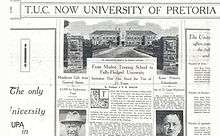
On 10 October 1930 the University of Pretoria Private Act, No. 13 of 1930 changed the name of the TUC to the University of Pretoria.[50] The TUC originally established as an English medium institution had evolved into the only fully bilingual university in South Africa and remained as such until the early 1930s. The rapid increase of Afrikaans speaking students brought about an imbalance between the demographics of students and the languages of instruction. By 1931, although 65% of students were Afrikaans speaking, 68% of the classes were conducted in English. In 1932 the University Council addressed the imbalance, deciding that Afrikaans would become the only medium of instruction. An increase in student numbers necessitated the building of new facilities such as the Club Hall and Administration Building (colloquially known as the ship) when the 7th faculty, the Medical Faculty, was established in 1943.[37] This period further saw the establishment of numerous student activities such as the annual Spring Day event and intervarsity. Student publications established include the Trek in 1931, the first Rag Mag in 1936 and the weekly student newspaper, Die Perdeby in 1939.[37] The period of 1948–1982 is characterised by the substantial increase in numbers of an almost exclusively white student body and the concomitant physical growth of the university infrastructure. The nearly doubling of student numbers demanded the physical expansion of the Hatfield campus and new buildings were built in quick succession as the campus grew eastward.[37] In the mid-1960s, the university urgently required additional land and acquired the adjacent property of Christian Brothers' College, Saint Gabriel's.[51] This property now forms the eastern section of the Hatfield campus.
In 1949 the university founded the Graduate School of Management (GSM),[52]
Transformation years: 1982 & beyond
During the period of 1982 to 2008 the university transformed into a bilingual, multiracial and inclusive institution. The comparatively smooth introduction of students from all races formed the initial impetus for transformation and in 1989 the University was declared officially desegregated and opened for all races. In 1993 a policy document was introduced, aiming to position the university in a newly democratic South Africa. In 1994 the university regained its status as a bilingual university when a new language policy was adopted.
In 1999 the only two veterinary science faculties in the country, those of the University of Pretoria and Medunsa were amalgamated. The university's Onderstepoort campus once again housed the only veterinary faculty in South Africa. In 2000 the Teachers Training College Pretoria, formerly the Normal College Pretoria founded in 1902, was incorporated into the university’s Faculty of Education, which saw the faculty moving to the self-sufficient Groenkloof campus.[37]
The university’s business school in Illovo Johannesburg, the Gordon Institute of Business Science, was established in January 2000 following a substantial contribution by Sir Donald Gordon, the founder of Liberty Life and Liberty International, and a major investment by the University of Pretoria following discussions started in 1998. The now defunct Vista University's Mamelodi campus was incorporated on 2 January 2004, as part of the restructuring of South African tertiary institutions.[53] In 2011 GIBS opened a satellite campus on Pritchard Street in the inner city of Johannesburg.[54][55] The Business school follows on the university's now defunct Graduate School of Management's long tradition of MBA tuition as the first business school outside of North America and replaced it in January 2008.[56]
Administration and organisation
Governance
| Faculty founding | |
|---|---|
| Faculty | Year founded |
| Faculty of Economic and Management Sciences | 1920 |
| Faculty of Education | 1902 |
| Engineering, Built Environment and Information Technology | 1908 |
| Faculty of Health Sciences | 1943 |
| Faculty of Humanities | 1908 |
| Faculty of Law | 1908 |
| Faculty of Natural and Agricultural Sciences | 1917 |
| Faculty of Theology | 1919 |
| Faculty of Veterinary Science | 1920 |
| Gordon Institute of Business Science | 2000 |
As set out in the Higher Education Act No 101 of 1997, the university is governed by the Council with the Vice-Chancellor & Principal the executive head responsible for the day-to-day administration and the Chancellor being the non-resident titular head of the university.[57] The Registrar is responsible for the academic administration of the University, as well as legal matters, and is secretary to the University Council and Senate.
The university's academic activities are divided into nine faculties and one business school. Whilst the faculties comprise 140 departments and 85 institutes, bureaus and centres.[58]
Main Campus

Hatfield
The university’s main campus and central administration offices are situated in the suburb of Hatfield, Pretoria and houses six of the nine faculties.[60][61] The campus, bordered by the suburb of Brooklyn to the south and Hatfield to the north, was built over 24 hectares and has more than 60 buildings of historical value.[62]
Adjacent to the Hatfield campus is the LC de Villiers Sport Grounds & High Performance Centre which were developed on an area of 76 ha. Adjacent to the sport grounds is the university's experimental farm, which is used to conduct field experiments for the Faculty of Natural and Agricultural Sciences.[63] The campus is served by the Hatfield Gautrain station connecting Pretoria and Johannesburg. A university bus shuttle service operates between the Hatfield campus and the Groenkloof and Prinshof campuses, whilst a park-and-ride shuttle service operates between the Hatfield campus and the LC de Villiers Sport Grounds.
Museums
The university’s art collection consists primarily of paintings, sculptures and graphic works by South African artists including the likes of Jacobus Hendrik Pierneef, Gregoire Boonzaier, William Kentridge and Sam Ngethwa. The collection also incorporates artworks by renowned international artists among others such as Max Pechstein, Käthe Kollwitz, Max Liebermann, George Grosz, Otto Mueller, Rembrandt van Rijn, Thomas Benton and Marc Chagall. The university's sculpture collection, the largest such collection in South Africa, contains sculptures by Sidney Kumalo, Maureen Quinn, Michael Teffo, Anton Smit and others.[64]
The Old Arts Building was proclaimed a provincial heritage site in 1968[65] and houses the Van Tilburg Collection, Van Gybland-Oosterhoff Collection and Mapungubwe Museum. The Van Tilburg Collection is a permanent museum that comprises 17th and 18th century furniture,[66] paintings,[67] Delft ceramics[68] and other works of art, and includes the largest South African collection of Chinese ceramic objects, from the Qin (221–206 B.C.), Han (202 B.C. – A.D. 220), Tang (A.D. 618–906), Song (A.D. 960–1279), Ming (1368–1644) and Qing (1644–1912) dynasties.[68]
| “ | What survives are the almost untouched remains of the palace sites and also the entire settlement area dependent upon them, as well as two earlier capital sites, the whole presenting an unrivalled picture of the development of social and political structures over some 400 years. | ” |
| — Unesco, on the Mapungubwe World Heritage Site[69] | ||
The university is the custodian of the collection of artefacts found at the Mapungubwe National Park and World Heritage site[70][71] and such display these artefacts in the Mapungubwe Museum.[72][73] Gold ornaments, ivory, bone, ceramic-ware, clay figurines, trade beads, iron and copper artefacts are on permanent public display.[74] The Van Gybland-Oosterhoff Collection is a ceramic collection, donated by Dr Horace Hugo Alexander van Gybland Oosterhoff and accepted by the university on 14 March 1939, is the largest collection of objects, publications, memorabilia and photographs of historical interest, relating to Dutch culture outside of the Netherlands.[75][76]
The Old Merensky Library houses the Edoardo Villa Museum. The Edoardo Villa Museum currently houses the largest collection of sculptures by the Italian artist Edoardo Villa and one South Africa's most renowned sculptors, who was mentored by Minotti at the Scuola D’Arte Andrea Fontoniby.[77][78]
The Van Wouw Museum is the largest collection of bronze, marble and plaster sculptures by the famous pioneer South African sculptor, Anton van Wouw (1862–1945).[79] Van Wouw, who is widely regarded as the founder of traditional sculpture in South Africa,[80] created masterful artworks portraying Boer figures and the indigenous peoples of South Africa. Besides documents, photos, paintings and tools the exhibits are mainly bronze maquettes and casts of Van Wouw's sculptural work.[81] The Van Wouw Museum is housed in Anton Van Wouw's last residence,[82] a Dutch national monument.
Other minor art collections include the Christo Coetzee collection which was bequeathed to the university by the artist in 2001 and consists of more than 3000 objects, NPK Ceramics Collection, Hilgard Muller Collection, Mike Edwards Collection, Kruger Collection, Frans Esterhuizen Cartoon Collection, Hansie Visagie Puppet Collection, Friends of the Pretoria Art Association Art Collection, Baldinelli Trust Collection and Mimi Coertse Collection.
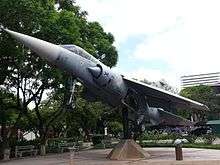
The University's Science, Engineering and Technology (SET) Discovery Centre, Sci-Enza, was officially launched in 1977.[84] The Discovery Centre is an umbrella complex where young children, students and adults can explore the world of science, engineering and technology in a "play-as-you-learn" way.[84] Activities at the Centre museum include: a Digital planetarium; Exploratorium; Camera Obscura;[85] Biological science exhibit; Botanical garden;[86] Indigenous technology exhibit[87]
-

Willem Lodewijk, etching done by Jacobus Houbraken, published by Isaac Tirion, 1752. Forming part of the van Gybland-Oosterhoff Collection -

Equine sculpture by Danie de Jager, Lc de Villiers Sports grounds[1] -
Illustration of a gold rhino statuete in the Mapungubwe Museum
Key places

The main hall and site of ceremonies, the Aula, was designed by Karel Jooste and completed in 1958. The Aula was the first Opera House to be built in the capital and remained the major venue in the city until the State Theatre's completion in the early 1980s.[88] The 1012-seat auditorium[89] has played host to foreign dignitaries, presidents,[90] local and international artists.[91] The main music complex, comprising the 500-seat Musaion and 3000-seat Amphitheatre, was built between 1960–1964[23] The University Chapel, formally the Church of Saint Alfons Maria de Liguori, and the accompanying Monastery was built in 1925 and was bought from the Catholic Church in 1980. Saint Alfons, who was canonised in 1839, was the founder of the order of Ligournians (or Redemptorists), an order founded in 1732 in Naples, Italy and dedicated to helping underprivileged communities.[92]
Other campuses
Onderstepoort, Pretoria
The possibility of training veterinarians in South Africa was frequently raised after the first Colonial Veterinary Surgeon in South Africa was appointed in approximately 1874, but it was not until 1920 that the Swiss-born veterinarian, Sir Arnold Theiler, was appointed as Director of Veterinary Education and Research at Onderstepoort under the supervision of the then Transvaal University College. New facilities were inaugurated at the end of 1921 and the first residence was opened in 1924. The first eight South African trained veterinarians qualified in 1924.
The Faculty of Veterinary Sciences was developed on the 65 hectares Onderstepoort campus, with buildings covering a total of 55 000 square meters 30 km north west of the Hatfield main campus and 15 km north of the Pretoria city center. The Onderstepoort Veterinary Academic Hospital provides clinical services rendered with full student participation as part of the primary teaching mission of the Faculty of Veterinary Science.[93] It's the only faculty in South Africa educating veterinarians and veterinary nurses.[94][95]
Groenkloof, Pretoria
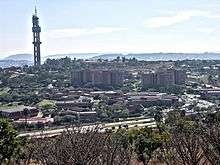
During the Conference of Teachers in Town and Refugee Camp Schools of the Transvaal and Orange River Colony of 1–10 July 1902 a resolution was passed to establish "Normal Schools" for the education of teachers in Johannesburg and Pretoria. The Pretoria Normal School, housed in a house in 126 Rissik Street commences with one student in 1902, growing to 19 by year end. In 1903 the Johannesburg Normal School's 40 students are transferred to Pretoria when it is closed and the Pretoria and Johannesburg institutions are merged to form the Transvaal Normal College. When the Transvaal University College is established in 1908 the first students include students from the Transvaal Normal College. 1909 the school is renamed the Pretoria Normal College when new teacher training facilities are established in Heidelberg and Johannesburg. In 1954 the school is again renamed to the "Onderwyskollege van Pretoria" or Teachers College Pretoria. In 1974 the University of Pretoria took over the sole responsibility for training secondary teacher from the Teachers College Pretoria.
Although the Teachers College Pretoria bought new college grounds in Groenkloof during 1975, the college only occupies the new grounds in 1988 and inaugurated in 1989. The Johannesburg "Goudstadse Onderwyskollege", Transvaal College of Education, Laudium and the Transvaal Education College Soshanguve amalgamate and move their operations to the Teachers College Pretoria in 1993 and the latter two in 1998 respectively. In 2000 the Teachers Training College Pretoria was incorporated into the university’s Faculty of Education, which saw the faculty moving from the main Hatfield campus to the self-sufficient Groenkloof campus.[96][97]
Prinshof, Pretoria
25°43′57″S 28°12′10″E / 25.73250°S 28.20278°E
Students in the Faculty of Health Sciences are taught at the Prinshof Campus, adjoining the Steve Biko Hospital (Formerly Pretoria Academic Hospital and HF Verwoerd Hospital) the main health care training facility of the university and the Tshwane District Hospital.[98] Additional health care training facilities include the Kalafong Hospital on the western outskirts of Pretoria in the suburb of Atteridgeville, the Weskoppies Psychiatric Hospital west of the city centre and built on the site of the old Pretoria botanical gardens and Tembisa Hospital south of Pretoria in the East Rand, Johannesburg.
Illovo, Johannesburg
The university's business school, the Gordon Institute of Business Science (GIBS), is situated in a greenfield campus in the Illovo Boulevard, mixed-use commercial node between the suburbs of Rosebank and Sandton in Johannesburg,[99] with a satellite Inner City Campus on Pritchard Street.[100] The Illovo campus is served by the Rosebank Gautrain station, with a nearby Gautrain bus stop and the inner city campus by the Johannesburg Park Station. GIBS Europe operates out of London, United Kingdom offering company specific programmes.
Other sites
The Witbank and Hammanskraal satellite campuses, were established in 1988 and 1994 respectively and are used as additional practical facilities and for community engagement.[101] The now defunct Vista University's Mamelodi campus was incorporated on 2 January 2004, as part of the restructuring of South African tertiary institutions.[53] The Mamelodi campus hosts the extended BSc degree programme and functions as the community engagement hub for the university.[102]
Academics
Library system

| “ | "This country has given me so much that I am only too happy to be allowed to help it to develop and to be able to give back to it a fraction of what it has given to me". | ” |
| — Dr. Hans Merensky at the opening of the Merensky Library ".[103] | ||
In 1933 the University decided that the library collection necessitated the building of a new library building, the collection which at that time was kept in the Old Arts building. The library was designed by the South African architect Gerard Moerdijk, following a donation of £10 000 from mining geologist Dr. Hans Merensky and construction started in 1937.[104] Drawing from his inspiration from Persia and Africa, the design of the building incorporates several architectural styles including Art Deco, Neo-Classicism, Arts and Crafts, Cape Dutch and Regency. The Old Merensky Library was proclaimed a provincial heritage site in 1991.[105]
Despite expansions to the Old Merensky Library in 1957, the library subsequently became insufficient to meet the growing needs of the institution and in 1975 the Merensky Library II was completed, currently housing 7 of 9 the faculty libraries.[106] Besides the main Merensky Library complex, the university library system also includes the separately administered Jotello F Soga Library (Veterinary Science), Oliver R Tambo Law Library, Education Library, Mamelodi Library and Health Sciences Library.[107]
The Oliver R Tambo Law Library houses the Faculty of Law's collection of legal materials and the Law of Africa collection in the library is the single most comprehensive and current collection of primary legal materials of African countries.[108]
In 1974 the Jotello F Soga Library of the Faculty of Veterinary Science at the Onderstepoort campus was established and is named in honour of Dr Jotello Festiri Soga the first South African qualified as a veterinary surgeon.[109]
In 2006 the University established UPSpace, its own open access digital research repository.[110] and the university's library has since become one of 27 partners in the World Digital Library project.[111]
Archives
In 1978 the first task group responsible for the investigation in creating an archive system for the University of Pretoria was chaired by Prof. A.N. Pelzer (Vice-rector). Due to the death of Prof. Pelzer in 1981 the project stalled, but by 1994 the need for a central archive system was again recognised by the acting Registrar, Prof. C.R. de Beer. The archives were finally established by 13 September 1994 by the Management of the University and this date is considered as the founding date of the archives of the University of Pretoria.[112]
Research
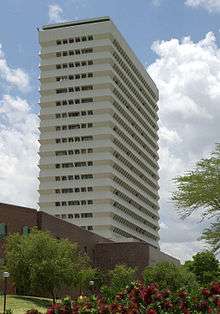
The university's achievements and performance in research locally and internationally, including its collaboration and cooperation with the private sector, industry, science councils, foundations and NGOs, the large number of graduates that it produces (particularly doctoral and other postgraduate students) as well as scientists and engineers[114] and its focus on innovation,[115] contribute directly towards enhancing the South Africa's competitiveness.[116] A 2010 report by Centre for Higher Education Transformation identified the university as a top research-intensive university in South Africa.[117] The university is member of the CDIO engineering education initiative and international collaboration.;[118][119]
In 1999 a strategic alliance was formed between the University of Pretoria and the Council for Scientific and Industrial Research (CSIR).[120] This alliance, which is known as the Southern Education and Research Alliance[121] (SERA), collaborates locally and internationally with universities, NGOs, companies and multinational bodies in various research areas.[122]
Notable research includes:
- Centre for Human Rights
- Forestry and Agricultural Biotechnology Institute (FABI)
- African Centre for Genome Technologies
Digital institutional repositories
UPeTD
UPeTD (University of Pretoria electronic theses and dissertations) was launched in July 2000 and forms part of the university's open scholarship programme. In January 2012 the Webometrics World Ranking of Institutional Repositories ranked the UPeTD website, 69th in the world.[123]
UPSpace
UPSpace (Institutional research repository of the University of Pretoria) is the name of the open access digital institutional repository of the University of Pretoria, established as a means for the management and dissemination of digital materials created by the institution and its community members.[124] UPSpace contains a collection of the intellectual and research output produced by past and current researchers of the University of Pretoria. The spectrum of material covered includes the following historical or archival material, research articles, popular research material, unpublished research, inaugural addresses, conference proceedings, technical reports and open lectures.
Reputation and ranking
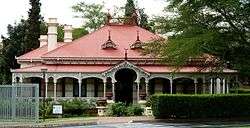
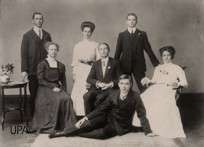
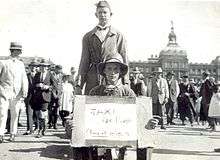
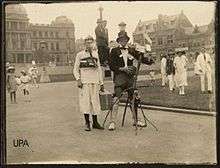
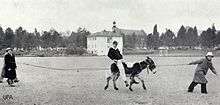
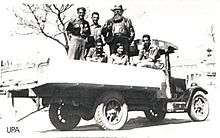
- League table rankings
The QS World University Rankings ranks the university as follows:[125]
| Year | World rank | Art & Humanities | Engineering & IT | Life Sciences | Natural Sciences | Social Sciences |
|---|---|---|---|---|---|---|
| 2011 | 501–550 | 345 | — | 391 | — | 398 |
| 2010 | 451–500 | 351–400 | 351–400 | — | — | 351–400 |
| 2009 | 401–500 | — | 291 | — | — | — |
| 2008 | 501+ | — | — | — | — | — |
| 2007 | 469 | 405 | 368 | 367 | 357 | 290 |
| Financial Times World Ranking | 2007 | 2008 | 2009 | 2010 | 2011 | 2012 |
|---|---|---|---|---|---|---|
| Executive MBA[26] | - | - | - | - | 67 | 60 |
| Executive Education Customised[26] | 49 | 51 | 41 | 38 | - | 42 |
| Executive Education Open[126] | 39 | 38 | 49 | 50 | 49 | 47 |
In January 2011 Webometrics ranked the university as the 2nd in South Africa and Africa.[127]
In January 2015 Webometrics ranked the university as the 3rd in South Africa and 4th Africa.[128]
In July 2015 Webometrics ranked the university as the 4th in South Africa and Africa.[128]
Student life
Residential life
Residence is provided to students in 24 undergraduate and postgraduate residences and 3 postgraduate-only residences spread over the University's campuses.[129] The first students of the Transvaal University College, resided in the Kya Rosa, a Victorian house in Skinner Street. In 1915, the first male residence Kollegetehuis was constructed on the Hatfield campus[130] and the first female residence Asterhof in 1925.[131] In 1916 Dutch Reformed Church established the Sonop Christelike Tehuis aiming to provide accommodation to the male students of the University, the private residence enjoys an official recognition agreement with University authorities.[132] Students not living in a University residence can join one of four Day Houses (Luminous, Vividus Men, Vividus Ladies and Zeus) which gives them the opportunity to partake in organised student life activities.[133]
Student organisations
More than 100 student clubs and organisations operate on the university campus.[134] These include numerous student government, service providers, and service organisations. The most prominent amongst these are the Student Parliament, Student Representative Council, and Constitutional Tribunal (Student Court). The Student Parliament is the plenary body of student governance and determines the wider mandate for student governance. The Student Representative Council (SRC) is the executive body of student governance and subsequently charters and provides most of the funding for other student groups, and represents students' interests when dealing with the administration. The SRC is the residential student government, specialising in programming, policy, and facilities and services. Societies are registered in the following categories as catering for religious, political, social, cultural, academic and other. The Constitutional Tribunal is the judicial body of student governance and adjudicates disputes primarily between student organisations. Its judges sit on the panel of student disciplinary hearings. The various service providers are the university’s primary programming organisations, serving as a centre of social, cultural, intellectual and recreational life.
Student activities
The university has a long tradition of student activities and traditions. It is common belief that if a blossom from a Jacaranda tree falls on your head, you will do well in the end-of-year exams.[135][136] Other traditions and customs vary by residence, day house and faculty.
The university started the tradition of Rag (student society) (Afrikaans: Jool), a student-run charitable fundraising organisation, in South Africa in 1925.[137] During Rag, students take to the streets in a parade of floats whilst collecting money for charity. The university's Springday celebrations are a declared university holiday and are held annually on the second Wednesday of September and the festivities are only second to the annual Rag.[138]
Students' song and dance competitions include Ienkmelodienk, Serenade and Serrie and the university’s Drama Department hosts the annual week-long Krêkvars Arts Festival each July in the intimate Bok, Lier and Masker theatres on the Hatfield campus. The festival has transformed from an event started in 2000 and centred around the Drama honours students’ Directing course to an open festival where other students and the public at large are encouraged to put on productions.[139]
The amphitheatre hosts the annual Ienkmelodienk song and dance competition between the first years of the various residences and day houses in January.[140] The annual Serenade and Serrie singing competitions between the residences and day houses are held in the Musaion and Aula theatres in July / August and April / May respectively. The winners of the Serenade competition go on to represent the university at the National Serenade competition.[141]
The university maintains the: UP Symphony Orchestra (UPSO), the only comprehensive student orchestra in Pretoria frequently performing symphonic repertoire,[142] UP Chorale, UP Brass Band, Tuks Camerata,[143] UP Children's choir, UP Concert choir and the UP Youth choir. The university supports, and has been host to the annual National Youth Orchestra course for a number of years.[144]
In addition to cultural activities, students participate in several other non-cultural activities. The university organises the annual SAE International sanctioned student automotive engineering Baja SAE competition in South Africa sponsored by Sasol.[145] Baja SAE is an intercollegiate and interuniversity design competition run by the Society of Automotive Engineers (SAE) where teams of engineering students design, build and race small off-road cars.
Mascot
Oom Gert (translates affectionately to Uncle Gert, from Dutch and Afrikaans) has been the official university mascot since 1929 and has been the object of perennial attempted kidnappings.[146]
Student media
The Perdeby(translates from Afrikaans as 'The Wasp'), the official university newspaper, was founded in 1939[147] and has a readership of approximately 30 000.[148] Tuks FM (107.2FM),the campus radio station, was established on 9 February 1981 and is run by university students out of the university's Student Centre.[149]
Civic service
Civic service and outreach programmes are performed in the fields in which the University has proven competencies. These fields include professional associations, business and management and are performed in underdeveloped or developing communities.[150]
Sport
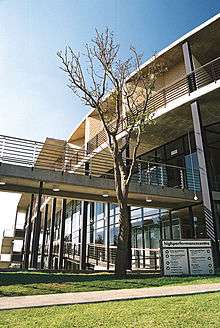
The University maintains a long tradition of student participation in sport and recreation. The University has 30 registered sport clubs and 10 academies, in which 9 000 students annually participate in on a competitive and recreational level,[151] more than 1 000 volunteers are involved in sport in various designations and capacities. In 2007 University of Pretoria produced 93 Senior Proteas and Springboks and 4 South Africa national rugby union team (Springbok) Captains.[152] The University sports facilities the LC de Villiers sports grounds, situated at an altitude of approximately 1,500 m (4920 ft) above sea level, were developed on an area of 760,000 m².[153][154]
The university's High Performance Centre (HPC), which was established in 2002 has become the favoured location for the pre-departure camps of Team South Africa in addition to being chosen by several national and international federations as their preferred specialisation centre.[153][155][156] The HPC hosted the Argentina national football team during the 2010 FIFA World Cup.[157]
The HPC has a bifurcated role between hosting the TuksSport academies and hosting athletes and teams for pre-season or pre-event training. The HPC hosts the Institute for Sport Research, Sport Science and Medical Unit and the Sports Law Centre[158]
The High Performance Centre’s TuksSport High School, established in 2002, is an independent specialised co-ed sports school catering for Grade 8 – 12 learners following the National Curriculum as offered by the Gauteng Department of Education. The school is supported by several national sporting federations and allows learners to train and travel internationally whilst staying in school.[159]
Rugby
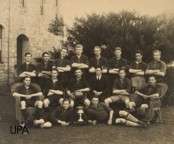
Rugby is a particularly popular sport, and there are competitions between residences, faculties, and the University participates in the National Club Championships, Carlton Cup[160][161] and the Varsity Cup Rugby Union tournament, involving the top 8 rugby playing universities in the South Africa. In the 2012 and 2013 seasons, the university won the Varsity Cup and the under 20 year old Varsity Rugby Young Guns competitions.[162]
The TUKS Rugby League team has their football ground as their home ground.
Mind Sports
The University has a very active club that was only founded in 2013. The club is affiliated to Mind Sports South Africa and caters for all the disciplines that are controlled by such National Federation.
The club has had some major successes in 2014, with no less than 12 gamers qualifying for National Team Trials. The club has also become the top university club in South Africa.[163]
Football
In 2002 the University established the Tuks Football Academy and the University of Pretoria F.C. oginally playing in the SAFA Gauteng South Division. In the 2003–04 season the University acquired Pretoria City F.C.'s second division status, subsequently winning the National First Division (NFD) Vodacom League play-offs and being promoted to the NFD in 2004–05. In the 2006–07 season the club qualified for the Mvela Golden League play-offs. In the 2008–09 season the club was a Nedbank Cup finalist losing to Premier Soccer League team Moroka Swallows 0–1.[164]
Following the 2011/2012 season the University of Pretoria F.C. will gain promotion to the South African Premier Soccer League (PSL), the top domestic league.[165][166]
Alumni and people
The university, in more than a century of academic service, has delivered more than 200 000 alumni.[167]
Alumni in commerce include several CEOs of JSE Top 50 and American Fortune 500 companies.[168] Dr. Anton Rupert was a South African entrepreneur, businessman, conservationist and founder of the Rembrandt Group, which eventually split up into Remgro, Richemont, the second-largest luxury goods company in the world by turnover, and Reinet Investments, as of January 2008 the largest component of the Luxembourg Stock Exchange.[169] He was honoured as Tukkie of the century, former chancellor of the university,[168] and a major benefactor of the university.[170] Marius Kloppers is the international CEO of BHP Billiton, the world's largest mining company and named by CNN Money as the world's 18th most powerful person in business.[171][172] Johan De Nysschen was the former President at Audi Japan and is the current President of Audi America.[173] Russell Loubser is a former CEO of the Johannesburg Stock Exchange, and a member of the team that started the futures industry in South Africa in 1987.[174] Meyer Kahn is the Chairman of SAB Miller the second largest brewer in the world.[175]
Alumni in law include several Judges of the High Court, Supreme Court of Appeal and Constitutional Court as well as serving as United Nations Special Rapporteurs and the United Nations International Law Commission. Johann van der Westhuizen is a judge in the Constitutional Court of South Africa.[176] He was appointed to the bench in 2004 by Thabo Mbeki. He was previously a professor at the University of Pretoria Faculty of Law and the founding director of the university's Centre for Human Rights.[177] He currently sits on the board of the Centre for Human Rights and the University of Pretoria Council.[177] Johann Kriegler is a former Constitutional Court and Appeal Court judge from South Africa. Christof Heyns is a former Director (1999–2006) of the Centre for Human Rights, is a Professor of Human Rights Law, Co-director of the Institute for International and Comparative Law in Africa at the University of Pretoria and United Nations Special Rapporteur on extrajudicial, summary or arbitrary executions.[178] Dire Tladi is a former Principal State Law Adviser for International Law for the South African Department of International Relations and Cooperation, legal advisor to the South Africa Mission to the United Nations[179] and member of the United Nations International Law Commission.
Alumni in divinity include several theologians. Albert Geyser was a South African cleric, scholar and anti-apartheid theologian. He was one of the first Afrikaner nationalists to speak out against the Broederbond and apartheid on theological grounds. He is also known for his work as one of a number of scholars involved in the first annotated edition (1953–1958) of the Bible in Afrikaans. Johan Heyns, was an influential Afrikaner Calvinist theologian and moderator of the general synod of the Nederduits Gereformeerde Kerk (NGK). He was assassinated, although his murder was never officially resolved it is widely believed[180] that it was directly related to his criticism of Apartheid.[181] Nelson Mandela paid homage to him as a martyr for his country[182] and a soldier of peace.[183]
Alumni include several sporting personalities. South Africa national rugby union team member's (Springboks) associated with the university include coach Heyneke Meyer[184] and former Springbok captains Victor Matfield, Wynand Claassen, Naas Botha and Joost van der Westhuizen. Other notable sporting personalities include Caster Semenya and Oscar Pistorius, who became the first double amputee runner at an Olympic Games when he competed at the London 2012 Summer Olympics.
-

Graduate with a banner of the TUC -

Graduation ceremony of the University of Pretoria in 1918 -

Graduation ceremony of the University of Pretoria in 1920 -

Graduation ceremony of the University of Pretoria in 1922
References
- ↑ "History of the University of Pretoria". Retrieved 31 August 2009.
- ↑ "Pretoria University". Web.archive.org. 6 August 2009. Archived from the original on 6 August 2009. Retrieved 12 January 2012.
- ↑ "South Africa's universities". Retrieved 31 August 2009.
- 1 2 "History of the University of Pretoria". Retrieved 31 August 2009.
- ↑ "University of Pretoria Annual Review" (PDF). Retrieved 20 May 2012.
- ↑ "Chancellor – Prof. Wiseman Nkuhlu". Retrieved 13 September 2009.
- ↑ "Chancellor > University of Pretoria". Web.up.ac.za. 5 February 1944. Retrieved 12 January 2012.
- ↑ "Mtšna Futhi Mtoba". Busa.org.za. Retrieved 12 January 2012.
- ↑ "UP at a Glance 2015" (PDF). Retrieved 17 October 2016.
- 1 2 "UP in a Nutshell 2009" (PDF). Retrieved 31 August 2009.
- ↑ "Contact Us > University of Pretoria". Web.up.ac.za. Retrieved 12 January 2012.
- 1 2 "Campuses > University of Pretoria". Web.up.ac.za. Retrieved 12 January 2012.
- 1 2 "Up in a Nutshell 2009" (PDF). Retrieved 12 January 2012.
- ↑ "Oom Gert > University of Pretoria". Web.up.ac.za. Retrieved 12 January 2012.
- ↑ "Members in Good Standing". Archived from the original on 10 August 2009. Retrieved 31 August 2009.
- ↑ "Members by country". Acu.ac.uk. Retrieved 12 January 2012.
- ↑ "The CDIO INITIATIVE". Retrieved 31 August 2009.
- ↑ "Members". Retrieved 31 August 2009.
- ↑ "Public Universities". Archived from the original on 4 August 2009. Retrieved 31 August 2009.
- ↑ "Members". Archived from the original on 1 May 2009. Retrieved 31 August 2009.
- ↑ "SA Universities". Universityworldnews.com. Retrieved 12 January 2012.
- ↑ "Conference Venues and Conference Centres Pretoria, Gauteng". Retrieved 18 September 2009.
- 1 2 "UP Historic Overview > University of Pretoria". Web.up.ac.za. Retrieved 12 January 2012.
- ↑ "About Veterinary Science > University of Pretoria". Web.up.ac.za. 25 August 2010. Retrieved 12 January 2012.
- ↑ "Wits Business School: Additional Information". MBA.co.za. Archived from the original on 2007-08-09. Retrieved 12 January 2012.
- 1 2 3 4 "GIBS". Retrieved 26 February 2010.
- ↑ "UP in a Nutshell 2008" (PDF). Retrieved 12 January 2012.
- ↑ "Handful of universities most prolific". Moneyweb.co.za. Retrieved 12 January 2012.
- ↑ "Netwerk24". Netwerk24.
- ↑ "Netwerk24". Netwerk24.
- ↑ "Netwerk24". Netwerk24.
- ↑ "Netwerk24". Netwerk24.
- ↑ "Unisa Online - Staff members".
- ↑ "UP Archive News > University of Pretoria". Web.up.ac.za. Retrieved 12 January 2012.
- ↑ "Eyeing the Oxbridge league". mg.co.za. Retrieved 17 September 2009.
- ↑ "Old Arts Building". Retrieved 10 September 2009.
- 1 2 3 4 5 6 7 "Overview University of Pretoria History > University of Pretoria". Web.up.ac.za. Retrieved 12 January 2012.
- 1 2 "Universiteit Van Pretoria". Britannica.com. Retrieved 12 January 2012.
- ↑ "Special Edition in celebration of the 100th Anniversary of the Geology Department at the University of Pretoria". Sajg.geoscienceworld.org. 1 September 2008. Retrieved 12 January 2012.
- ↑ "University of Pretoria". Retrieved 29 September 2009.
- ↑ "History of the University of Pretoria". Britannica.com. Archived from the original on 2012-02-19. Retrieved 12 January 2012.
- ↑ The Garrett papers By Fydell Edmund Garrett, Gerald Shaw. Google Books. Retrieved 12 January 2012.
- ↑ "Kya Rosa". Retrieved 29 September 2009.
- ↑ "University of Pretoria Historic Overview". Web.up.ac.za. Archived from the original on 2014-11-16. Retrieved 12 January 2012.
- ↑ "History of Wits". Web.wits.ac.za. Retrieved 12 January 2012.
- ↑ "University of Pretoria". Britannica.com. Retrieved 12 January 2012.
- ↑ "University of Pretoria". Retrieved 18 September 2009.
- ↑ "Old Arts Building". Retrieved 18 September 2009.
- ↑ "South Africa Education Universities". Southafrica.co.za. Retrieved 12 January 2012.
- ↑ "Pretoria School of Architecture". Artefacts.co.za. Retrieved 12 January 2012.
- ↑ "School's History". Cbcpretoria.co.za. Retrieved 12 January 2012.
- ↑ "Wits Business School: Additional Information". Mba.co.za. Archived from the original on 2007-08-09. Retrieved 12 January 2012.
the GSM MBA was the first MBA programme to be launched outside of North America
- 1 2 "Mamelodi > University of Pretoria". Web.up.ac.za. Archived from the original on 2012-02-19. Retrieved 12 January 2012.
- ↑ "Gordon Institute of Business Science". Gibs.co.za. Retrieved 12 January 2012.
- ↑ "The Gordon Institute of Business Science".
- ↑ "Gordon Institute of Business Science, Pretoria". Retrieved 15 September 2009.
- ↑ "Management & Governance". Web.up.ac.za. Archived from the original on 2014-08-16. Retrieved 12 January 2012.
- ↑ "About UP". Web.up.ac.za. Archived from the original on 2014-10-25. Retrieved 12 January 2012.
- ↑ "Administration Building". Retrieved 18 September 2009.
- ↑ "University of Pretoria". Sarua.org. Retrieved 12 January 2012.
- ↑ "University of Pretoria". Archived from the original on 2012-02-20.
- ↑ "Study Info 2010" (PDF). Retrieved 12 January 2012.
- ↑ "Department of Plant Production and Soil Science Facilities". Web.up.ac.za. 13 September 2010. Retrieved 12 January 2012.
- ↑ "University of Pretoria Art Collection". Web.up.ac.za. 17 February 2010. Retrieved 12 January 2012.
- ↑ "Old Arts Building". 29 March 2010.
- ↑ "The collection of European furniture". Web.up.ac.za. Retrieved 12 January 2012.
- ↑ "The collection of paintings and graphic works". Web.up.ac.za. Retrieved 12 January 2012.
- 1 2 "The ceramic collection". Retrieved 14 September 2009.
- ↑ "Mapungubwe: SA's lost city of gold". Southafrica.info. Retrieved 12 January 2012.
- ↑ "Mapungubwe National Park and World Heritage Site". Sanparks.org. Retrieved 12 January 2012.
- ↑ "Mapungubwe Cultural Landscapeand World Heritage Site". Whc.unesco.org. 31 December 1932. Retrieved 12 January 2012.
- ↑ "World heritage in South Africa". Southafrica.info. 1 November 2007. Retrieved 12 January 2012.
- ↑ "Mapungubwe Museum". Web.up.ac.za. 17 February 2010. Retrieved 12 January 2012.
- ↑ "The Mapungubwe Collection". Web.up.ac.za. Retrieved 12 January 2012.
- ↑ "University of Pretoria Art Collections". Tshwanetourism.co.za. Retrieved 12 January 2012.
- ↑ "Wiki Travel Guides – Culture scene". Gotravel24.com. 25 February 2011. Retrieved 12 January 2012.
- ↑ "Edoardo Villa Museum". Retrieved 1 October 2009.
- ↑ "Edoardo Villa". Artnet.com. Retrieved 12 January 2012.
- ↑ "Up in a Nutshell 17 September 2009" (PDF). Retrieved 12 January 2012.
- ↑ "Anton van Wouw". Retrieved 17 September 2009.
- ↑ "African Studies by Anton Van Wouw". Web.up.ac.za. Retrieved 12 January 2012.
- ↑ "History of the Van Wouw House". Web.up.ac.za. Retrieved 12 January 2012.
- ↑ https://web.up.ac.za/default.asp?ipkCategoryID=2843&ArticleID=4590
- 1 2 "About us". University of Pretoria. Retrieved 2 November 2009.
- ↑ "Camera Obscura". Web.up.ac.za. 21 February 2011. Retrieved 12 January 2012.
- ↑ "Manie van der Schijff Botanical Garden". Web.up.ac.za. 8 February 2011. Retrieved 12 January 2012.
- ↑ "Mapungubwe Museum". Web.up.ac.za. 17 February 2010. Retrieved 12 January 2012.
- ↑ "Aula & Rautenbach Hall". Retrieved 24 April 2010.
- ↑ "Aula Theatre Specifications" (PDF). Retrieved 12 January 2012.
- ↑ "Media programme for state visit to South Africa by Chinese President Hu Jintao". Info.gov.za. Retrieved 12 January 2012.
- ↑ "Lunch hour concerts". Web.up.ac.za. 9 February 2011. Retrieved 12 January 2012.
- ↑ "Chapel (Old Monastery)". Retrieved 18 September 2009.
- ↑ "Faculty Facilities". Web.up.ac.za. 7 April 2011. Retrieved 12 January 2012.
- ↑ "Faculty of Veterinary Science About us". Web.up.ac.za. 25 August 2010. Retrieved 12 January 2012.
- ↑ "The Faculty of Veterinary Science". Retrieved 29 September 2009.
- ↑ "Welcome to the Faculty of Education". Web.up.ac.za. Retrieved 12 January 2012.
- ↑ "A Chronological History" (PDF). Retrieved 12 January 2012.
- ↑ "Faculty of Health Sciences Initiatives". Web.up.ac.za. 22 July 2010. Retrieved 12 January 2012.
- ↑ "About the Ilovo Boulevard". Illovoboulevard.com. Retrieved 12 January 2012.
- ↑ "Inner City Campus". Gibs.co.za. Retrieved 12 January 2012.
- ↑ "University of Pretoria Historic Overview". Web.up.ac.za. Retrieved 12 January 2012.
- ↑ "University of Pretoria 29 December 2011". Matric.mg.co.za. Retrieved 12 January 2012.
- ↑ https://www.up.ac.za/dspace/handle/2263/6526
- ↑ "Old Merensky Library". Retrieved 18 September 2009.
- ↑ "Old Merensky Library". Retrieved 29 March 2010.
- ↑ "Historical Background". Library.up.ac.za. Retrieved 12 January 2012.
- ↑ "About Us". Library.up.ac.za. Retrieved 12 January 2012.
- ↑ "About the ICLA". Retrieved 27 June 2011.
- ↑ "out the Library". Library.up.ac.za. 5 May 2009. Retrieved 12 January 2012.
- ↑ "UPSpace". Retrieved 2 October 2009.
- ↑ "About the World Digital Library: Partners". Retrieved 21 April 2009.
- ↑ "Founding". Retrieved 8 May 2013.
- ↑ "Human Sciences Building". Retrieved 18 September 2009.
- ↑ "Message from the Dean, Prof Roelf Sandenbergh". Web.up.ac.za. 8 November 2010. Retrieved 12 January 2012.
- ↑ "Ready to face the future and inspire a generation". Web.up.ac.za. 17 May 2007. Retrieved 12 January 2012.
- ↑ "Eyeing the Oxbridge league". mg.co.za. Retrieved 12 January 2012.
- ↑ McGregor, Karen (23 May 2010). "SOUTH AFRICA: New university clusters emerge". University World News. Retrieved 11 June 2010.
- ↑ "CDIO". Engsc.ac.uk. Retrieved 12 January 2012.
- ↑ "CDIO". Cdio.org. Retrieved 12 January 2012.
- ↑ "Highlights and Achievements" (PDF). Retrieved 12 January 2012.
- ↑ "SERA - Southern Education and Research Alliance".
- ↑ "SERA Relationships and Links" (PDF). Retrieved 12 January 2012.
- ↑ "Top 400 World repositories". Repositories.webometrics.info. Retrieved 12 January 2012.
- ↑ Lynch, Clifford A. (February 2003). "Institutional repositories: essential infrastructure for scholarship in the digital age". ARL. 226. Archived from the original on 12 October 2004. Retrieved 20 October 2004.
- ↑ "University Rankings". Top Universities. QS Quacquarelli Symonds. Retrieved 26 February 2010.
- ↑ "University of Pretoria GIBS". Rankings.ft.com. Retrieved 12 January 2012.
- ↑ "Top Africa". Archived from the original on 4 October 2009. Retrieved 15 September 2009.
- 1 2 "Africa". webometrics.info.
- ↑ "The choice is yours – Residences". Web.up.ac.za. 25 November 2011. Retrieved 12 January 2012.
- ↑ "The Republic of Kollegetehuis". Web.up.ac.za. Retrieved 12 January 2012.
- ↑ "About Asterhof". Web.up.ac.za. Retrieved 12 January 2012.
- ↑ "Sonop". Web.up.ac.za. Retrieved 12 January 2012.
- ↑ "Day Houses". Web.up.ac.za. Retrieved 12 January 2012.
- ↑ "Societies". Web.up.ac.za. 1 June 2011. Retrieved 12 January 2012.
- ↑ "The Jacaranda City". Gopretoria.co.za. Retrieved 12 January 2012.
- ↑ "Jacaranda (Jacaranda acutifolia". Friendsaccsa.com. Retrieved 12 January 2012.
- ↑ http://www.encyclopedia.com/doc/1G1-174603121.html
- ↑ "Main Calendar dates" (PDF). Retrieved 12 January 2012.
- ↑ "Krekvars: 50 Different Shows Stretch Tuk's Drama Students". Litnet.co.za. 4 October 2006. Retrieved 12 January 2012.
- ↑ "An Ienkmelodienk to remember". Perdeby.co.za. 4 February 2010. Retrieved 12 January 2012.
- ↑ "Serenade 2007 – Life is but a song!". Web.up.ac.za. 30 July 2007. Retrieved 12 January 2012.
- ↑ "Orchestras". Retrieved 1 October 2009.
- ↑ "Choirs". Web.up.ac.za. 2 March 1998. Retrieved 12 January 2012.
- ↑ "South African National Youth Orchestra Foundation – History". 4 March 2009. Retrieved 20 March 2010.
- ↑ "Tuks Baja". Retrieved 17 October 2009.
- ↑ "Oom Gert's new home" (PDF). Retrieved 13 May 2012.
- ↑ "University of Pretoria Historical Overview". Web.up.ac.za. Retrieved 12 January 2012.
- ↑ "Perdeby". Veldfiremedia.com. Retrieved 12 January 2012.
- ↑ "History". Tuksfm.co.za. 11 February 2008. Retrieved 12 January 2012.
- ↑ "More about the Department of Community Engagement". Web.up.ac.za. Retrieved 12 January 2012.
- ↑ "Up in a Nutshell 2009" (PDF). Retrieved 12 January 2012.
- ↑ "Centenary" (PDF). Retrieved 12 January 2012.
- 1 2 "Sport Facilities". Web.up.ac.za. 29 August 2011. Retrieved 1 October 2009.
- ↑ "About Us". Retrieved 1 October 2009.
- ↑ "About Us". Web.up.ac.za. 29 August 2011. Retrieved 12 January 2012.
- ↑ "World Cup 2010: Party Atmosphere As Argentina Train In Pretoria". Goal.com. 7 June 2010. Retrieved 12 January 2012.
- ↑ Mail Foreign Service (23 May 2010). "Diego Maradona demands luxury toilets be installed at World Cup training base". Daily Mail. UK. Retrieved 12 January 2012.
- ↑ "High Performance Centre". Web.up.ac.za. 29 November 2010. Retrieved 12 January 2012.
- ↑ "TuksSport High School". Web.up.ac.za. 9 June 2011. Retrieved 12 January 2012.
- ↑ "TuksRugby : UP-Tuks 1 defend cup title with emphatic win". Web.up.ac.za. 12 September 2011. Retrieved 12 January 2012.
- ↑ "TuksRugby : UP-Tuks over first hurdle at Club Champs". Web.up.ac.za. 19 September 2011. Retrieved 12 January 2012.
- ↑ Independent Newspapers Online. "Tuks clinch Varsity Cup in style". Independent Online.
- ↑ http://www.news24.com/MyNews24/A-new-force-in-SA-gaming-has-emerged-20140423
- ↑ "University of Pretoria FC". Psl.co.za. 11 June 2010. Retrieved 12 January 2012.
- ↑ "Tuks secures Premiership promotion". Retrieved 13 May 2012.
- ↑ "AmaTuks make it to top flight". Retrieved 13 May 2012.
- ↑ http://web.up.ac.za/UserFiles/UP%20in%20a%20Nutshell(1).pdf
- 1 2 "Alumni Gallery". Web.up.ac.za. 26 November 2010. Retrieved 12 January 2012.
- ↑ Independent Newspapers Online (5 May 2010). "Tycoon Anton Rupert dies in his sleep". Busrep.co.za. Retrieved 12 January 2012.
- ↑ "History of the Van Wouw House". Web.up.ac.za. Retrieved 12 January 2012.
- ↑ Stephen Mayne writes: (31 May 2007). "Crikey – Another foreigner climbs to the top of the heap at BHP-Billiton – Another foreigner climbs to the top of the heap at BHP-Billiton". Crikey.com.au. Retrieved 12 January 2012.
- ↑ "25 most powerful people in business". CNN. Retrieved 12 January 2012.
- ↑ "Johan De Nysschen". Linkedin.com. Retrieved 12 January 2012.
- ↑ "Russell Loubser". Whoswhosa.co.za. Retrieved 12 January 2012.
- ↑ "Meyer Kahn". Sabmiller.com. Retrieved 12 January 2012.
- ↑ "Justice Johann van der Westhuizen". Constitutional Court of South Africa. Retrieved 9 November 2008.
- 1 2 "Johann Van der Westhuizen". Retrieved 25 June 2011.
- ↑ "Special Rapporteur on extrajudicial, summary or arbitrary executions". Web.up.ac.za. 27 October 2011. Retrieved 12 January 2012.
- ↑ "Prof Dire Tladi". Retrieved 28 November 2011.
- ↑ Monitoring The Transition To Democracy In South Africa, by the United Nations Commission on Human Rights, 16 January 1995 - paragraph 78
- ↑ Shafto, Michael (19 August 1990). "Hendrik Pretorius has truly set the cat among some very disapproving pigeons in the Ned Geref Church, with the publication of a book, Om gay te wees: straf of seën? (To be Gay: Punishment or Blessing?) and by coming out of the closet this week, he has filled Nederduits Gereformeerde Kerk traditionalists with fear and alarm". The Sunday Star.
- ↑ Address by President Nelson Mandela to the Constitutional Assembly, Cape Town, 8 May 1996
- ↑ Anti-Apartheid Minister Shot Dead in Pretoria, The New York Times, 7 November 1994
- ↑ "SA Rugby - Official Home of the Springboks". sarugby.co.za.
Further reading
- Duffey, Alexander et al. The Art & Heritage Collections of the University of Pretoria (2008)
- van der Watt, F. Rectores Magnifici (2003). 196pp. ISBN 978-1-86919-043-9
- Roodt, P.H., ed. Amfiteater: skrywerstemme van oud-Tukkies (2008) Protea Boekhuis
- Botha, M.C. Foundation stone laid at the University of Pretoria (1942) UPSpace at the University of Pretoria: Hoeksteenlegging by Universiteit van Pretoria
External links
- University of Pretoria Official Website
- University of Pretoria in a Nutshell 2012/13
- – Digital Research Repository of the University of Pretoria
- Life at UP
- UP Wiki
- Tukkies Life
Coordinates: 25°45′13″S 28°13′47″E / 25.75361°S 28.22972°E
